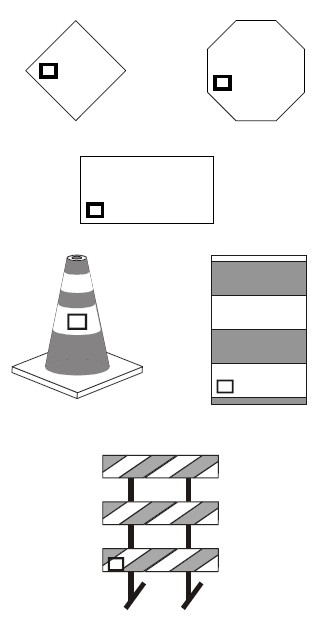616.19 Quality Standards for Temporary Traffic Control Devices
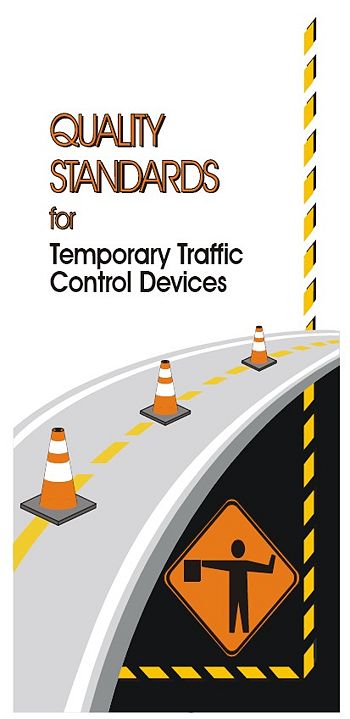
Temporary traffic control devices are a necessary part of highway work zones. These devices warn motorists of hazards, advise them of the proper path through the work area, delineate areas where they may not operate and separate them from workers and opposing traffic.
There are many factors that ensure the success of these functions; the performance and condition of each temporary traffic control device are two such factors. Whenever worn or damaged devices appear in a work zone, the general quality of the work zone deteriorates. This situation may reduce the level of safety provided to the workers, pedestrians and travelers due to the road users’ loss of confidence in and compliance with the devices.
It is with this possibility in mind and to provide the means to comply with the Manual on Uniform Traffic Control Devices' Section 1A-05 that MoDOT established this article. These quality standards are applicable to all temporary traffic control devices (e.g., impact attenuators, truck-mounted attenuators, signs, channelizers, barricades, warning lights, changeable message signs, flashing arrow panels, work zone traffic signals, lighting units, temporary pavement marking, temporary traffic barrier, etc.) deployed on the state highway system. The result of its effective application benefits those who work in or navigate work zones on state highway right of way.
616.19.1 Quality Requirements
Temporary traffic control devices shall be installed and maintained in an acceptable condition. Unless specified otherwise, this requirement does not mandate the use of new devices. However, it does necessitate the use of functional devices. Unacceptable devices shall be replaced or corrected in accordance with the contract documents or, in the absence of a contract, as directed by MoDOT’s representative.
616.19.2 Quality Standards
These quality standards are to be used by those responsible for the installation, operation, maintenance and inspection of temporary traffic control devices as a guide to determine if those devices are acceptable for use on the state highway system.
These standards should be applied at several stages: prior to delivery to the work zone, during initial setup and routinely during the course of work. Such scrutiny will ensure the effectiveness of the temporary traffic control devices throughout the life of the work zone.
616.19.2.1 General
All temporary traffic control devices shall be:
- In conformance with the requirements of the MUTCD and MoDOT Standards.
- Installed and maintained at locations and in orientations that maximize safety and minimize disruption to traffic flow.
- Aligned with the road user’s line of vision.
- Positioned as to not obstruct other applicable traffic control devices.
- Free of any appreciable dents, holes, deformations, abrasions, tears, marks, stains, residues, fading or other deficiencies that affect the operational performance of a device; or, are cause for failure of a device to conform with the requirements of the MUTCD or MoDOT standards to be considered crashworthy.
- Properly covered, turned, stowed, or removed when not in use.
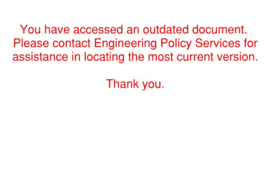
616.19.2.2 Barricades, Channelizing Devices and Signs
These devices shall be:
- Reasonably plumb to the pavement.
- Safely and neatly ballasted, as needed.
- Clearly visible and legible/distinguishable to approaching traffic during the day and, if applicable,at night.
Refer to sign covering practices and, for examples of unacceptable devices, refer to unacceptable standards.
616.19.2.3 Warning Lights
These devices shall be:
- Visible from a distance of 3,000 ft. on a clear night for Type A (low-intensity, flashing) and Type C (low-intensity, steady-burn) and from a distance of 1,000 ft. on a sunny day without the sun directly on or behind the devices for Type B (high-intensity, flashing) warning lights.
- Illuminated at appropriate times.
- Securely affixed to the host.
616.19.2.4 Flashing Arrow Panels
These devices shall be/have:
- Functioning in the appropriate mode.
- No more than one lamp, of those to be energized, out in stem and no lamps out in the arrow head(s) when in the arrow (single- or double-headed) and no lamps out when in the caution (four corners) modes.
- Appropriately dimmed at night
Any lamp drawing less than 60% of its original power draw or producing less than 60% of its original output is considered out.
616.19.2.5 Changeable Message Signs
These devices shall be/have:
- Displaying the prescribed message at an appropriate cycle.
- Clearly legible to approaching traffic with minimal display abnormalities.
- Appropriately dimmed at night.
616.19.2.6 Temporary Pavement Markings
These devices shall be:
- In place at applicable times.
- Reasonably aligned longitudinally.
- Clearly visible to approaching traffic during the day and night.
- Completely removed when no longer applicable.
616.19.2.7 Sign Coverings
These items shall be:
- Sized to match the sign to be covered
- Positioned to cover most of the sign face.
- Designed to prevent “bleed through” of the covered sign and damage to the permanent sign installation.
- Constructed with non-metallic handles.
- Adequately secured to the host sign assembly.
Examples of acceptable sign covering practices:
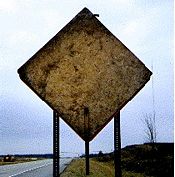 |
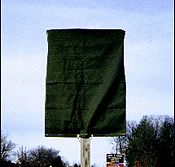 |
616.19.3 Unacceptable Standards
Below are examples of unacceptable temporary traffic control devices. These examples apply to all such devices.
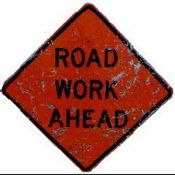 |
 |
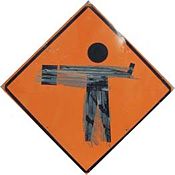 |
 |
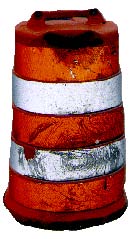 |
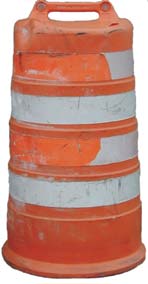 |
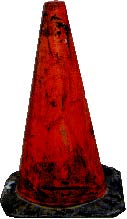 |
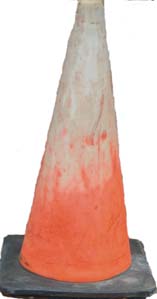 |
616.19.4 Rejection Stickers
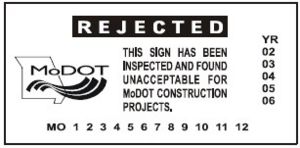
REJECTED stickers, with appropriate month and year designated, may be used by MoDOT personnel to identify unacceptable temporary traffic control devices. For barricades, channelizing devices and signs, the sticker should be located on the front-, left- and lower-most retroreflective area on the device. For other devices, the sticker should be located in a conspicuous place on the device.
Below are examples of rejection sticker locations:
